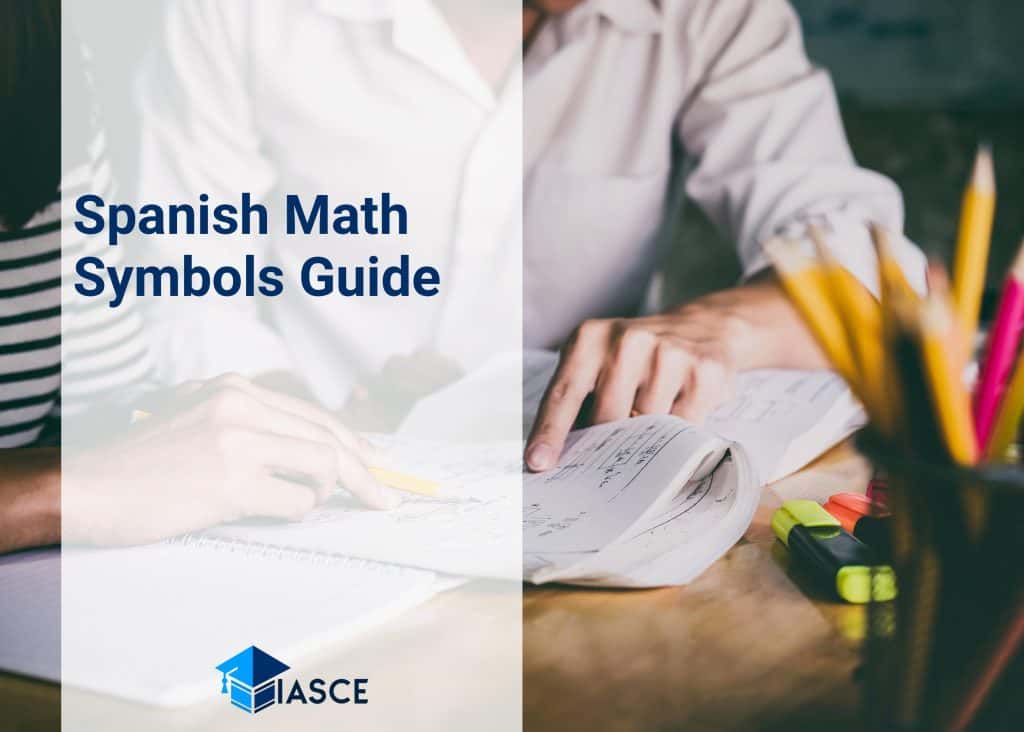Navigating the realm of mathematics can be complex enough, but throw in a language barrier and it’s like diving headfirst into an intricate puzzle. That’s where I come in to help decode the mystery of math symbols in Spanish.
In this linguistic guide, we’ll explore how to express mathematical operations, terms, and symbols in Spanish. You’ll find that while some elements are universally recognized (like “=” or “+”), others have distinct names and pronunciations. So let’s dive right in and start turning math jargon into friendly conversation!
Remember, understanding these symbols isn’t just about solving equations; it’s also a gateway to engaging more authentically with Spanish-speaking communities around the world. Stay tuned as we unlock the secrets of Spanish math symbols together!
Deciphering Math Symbols in Spanish
Mathematics, it’s truly a universal language. But when you’re studying math in a different language, such as Spanish, you might find yourself stumbling over the symbols and their names.
Firstly, let’s cover some of the basics. The plus sign (+) is “más” in Spanish. Minus (-), on the other hand, becomes “menos”. We also have multiplication (×) represented by “por”, and division (÷) translates to “dividido por”.
Here’s an easy-to-read table illustrating these basic mathematical symbols:
| English | Symbol | Spanish |
|---|---|---|
| Plus | + | Más |
| Minus | – | Menos |
| Times | × | Por |
| Divide | ÷ | Dividido |
Now for something slightly more complex: what about those pesky greater than (>) or less than (<) signs? In Spanish, we say “mayor que” for greater than and “menor que” for less than. Equal (=), meanwhile, is simply “igual”.
Let’s not forget about our friend the decimal point (.). It goes by the name of “punto” in Spanish-speaking countries.
Finally, let’s tackle those tricky fractions. A fraction like ½ is read as “un medio”. Here’s another example: ¾ becomes “tres cuartos”.
Ultimately, understanding math symbols in Spanish can open up new ways of thinking about mathematics itself! It’s just another reminder that learning languages isn’t only about memorizing vocabulary – it also involves understanding different cultural perspectives on universal concepts like math.
Bridging the Gap: Understanding Math Terminology Differences
It’s fascinating how language can influence even our understanding of mathematics. If you’ve ever looked at math textbooks or academic papers in Spanish, you may have noticed some differences in the symbols used. Let’s take a closer look.
Firstly, we’ve got to acknowledge that math is a universal language. The concepts remain consistent, regardless of the language spoken. However, it’s undeniable that there are slight variations in terminologies and symbols across different languages.
For instance, take the simple addition operation. In English, we use ‘plus’ to denote this operation while in Spanish it’s expressed as ‘más’. Similarly, the symbol ‘=’ known as ‘equals’ in English is referred to as ‘es igual a’ or simply ‘igual’ in Spanish.
Here are few more examples:
| English | Symbol | Spanish |
|---|---|---|
| Minus | – | Menos |
| Multiply | x | Multiplicar |
| Divide | ÷ | Dividir |
Understanding these nuances can greatly enhance communication especially for those involved in international academia or work settings where mathematical discourse happens across multiple languages. It’s not just about getting your sums right; it’s also about making sure others understand your results!
There’s no need to feel overwhelmed by these differences though! With a bit of practice and exposure, these terms will become second nature. Remember, mathematics is all about patterns – once you recognize them across different languages too, there’ll be no stopping you from acing those equations!
So next time someone asks you what ‘menos’ means in Spanish math lingo? You’ll know it’s just another way of saying ‘minus’. And when they ask what does ‘dividir’ mean? Well now you know that’s how mathematicians say ‘divide’ over there!
Keep exploring linguistic variations within math terminology – who knows what other interesting things await discovery!
Conclusion: Enhancing Mathematics Through Language
Diving into the fascinating world of math symbols in Spanish, I’ve discovered that language truly plays a pivotal role in our understanding and interpretation of mathematics. It’s clear that there’s more to these symbols than just their literal translations.
We can see how Spanish math symbols contribute to a richer and more nuanced understanding of mathematical concepts. For instance, ‘mas’ (plus) and ‘menos’ (minus) are not mere replacements for ‘+’ or ‘-‘. They bring with them cultural connotations and linguistic subtleties that shape the way Spanish speakers approach mathematics.
Let’s consider some examples:
| English | Spanish |
|---|---|
| Plus (+) | Más |
| Minus (-) | Menos |
While simple on the surface, these terms reveal deeper layers when examined through a linguistic lens. The term ‘más’ doesn’t just mean adding numbers together; it suggests an increase or accumulation. Similarly, ‘menos’ isn’t only about subtraction; it implies a reduction or decrease.
I truly believe this exploration highlights the importance of embracing language diversity in education. By understanding how different languages interpret mathematical concepts, we can create teaching strategies tailored to students’ unique linguistic backgrounds. This could potentially improve their comprehension and foster a greater appreciation for mathematics as a universal language.
So next time you’re delving into equations or crunching numbers, keep in mind there’s more than one way to speak “math”. And remember – every symbol has its own story to tell!

